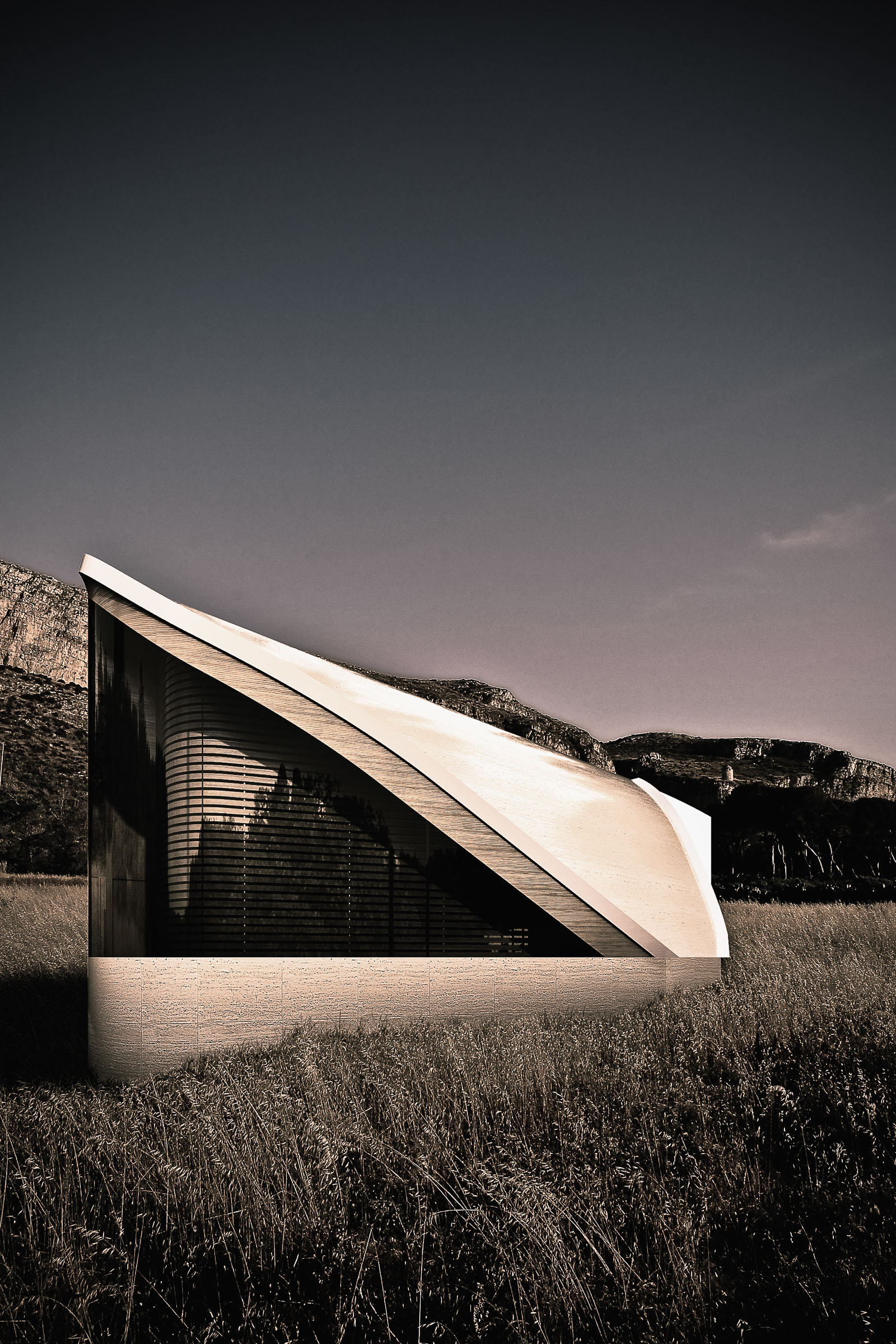Interview
Antonino Cardillo, with Daniel Qiu
If architecture is a symphony composed of stacked stones, can it also dance gracefully? This house, named House of Convexities, located in the suburban outskirts near Barcelona, has captivated many with its unique curved structure. Architect Antonino Cardillo infused his travel experiences and perception of dance arts into the architectural design, allowing the seemingly static building to exude the rhythm of Flamenco dance from within.
DQ: ‘Why did you build this house, and what stories lie behind it?’
AC: ‘This house was commissioned by a composer with a profound interest in the music of the southern Mediterranean. His love for music inspired him to request a house imbued with a sense of “rhythm”. This was an unprecedented experience for me, as integrating the abstract concept of “rhythm” into a physical structure was indeed a significant challenge.
From the floor plan and photos, you can discern that the theme of this building embodies a Mediterranean urban rhythm. The design of each bedroom features two different shapes. The irregular spiral dome blurs the function of the master bedroom, as this shape visually connects with the living room downstairs. However, as we approach the oval-shaped areas within the building, the space feels more like being inside a tall tower. Another bedroom follows a more traditional design and can serve as a guest room or children’s room. Crucially, this house was not strictly designed according to functional zones (which can change over time) but adheres to a logic of shapes and spaces. This way, as we ascend the building from the ground floor living room via two different staircases, we can experience two completely independent night-time spaces.
Every client has different ideas and requirements for their house. I always strive to interpret these ideas and requirements from an artistic perspective. I believe that the form of architecture should not overly emphasise the original function of the structure. Therefore, my buildings always have the potential to change their function in the future. Today, this house may be a private residence, but tomorrow it could serve many other purposes, such as a restaurant, exhibition space, or art gallery’.
DQ: ‘Could you discuss the most prominent features of this house?’
AC: ‘I attempt to represent a unique culture, like Spanish Flamenco dance, through architecture. However, my interest lies not in merely representing a single language or style. I prefer to blend and reassemble them. For instance, the inspiration for this building came from a trip to Havana, Cuba, and an accidental encounter with Flamenco dance’.
DQ: ‘What was the greatest challenge in building this house?
AC: “The elliptical area of the dining room. This complex structure needed to be supported by several pillars. I utilised the window frames around the elliptical shape and the reinforced cement walls to support the entire top’.
DQ: ‘How do you understand the relationship between people and housing?’
AC: ‘The buildings I design are more suited for those who enjoy living in meditative spaces; such spaces also express my personal views on history and the world. However, I am well aware that my designs are not for everyone. In my architecture, you need a different attitude toward living; perhaps a more mature lifestyle that is also more aesthetic, simplistic, and poetic. Thus, in my buildings, the interaction between people and natural elements like sunlight, rain, wind, and sound is far more important than the interaction with objects or furniture. To me, dwellings should not merely be a combination of lifeless objects. Of course, if you are keen on chasing fashion and trends, my designs are definitely not for you. I like to imagine architecture as music, and when a piece reaches a balanced state, any redundant embellishment is unnecessary’.
DQ: ‘What kind of people do you like to build houses for?’
AC: ‘To live in such a house, you must believe that sunlight can replace the television. In a way, living in such a house means returning to a primitive state. The ever-changing natural light is always a focal point in my architecture. These houses are like planetary observatories, constantly recording the myriad changes in weather on their walls. As in music, aesthetic appreciation is gained through the passage of time. The weather, with its unpredictable colours, not only colours every wall of the house but also elevates our daily lives beyond the mundane and repetitive. My architecture is not built for those who like to follow the conventions or indulge in pleasures; it is more suited for those who are constantly exploring and pursuing’.

Antonino Cardillo, House of Convexities, Barcelona, 2008. CGI: Antonino Cardillo